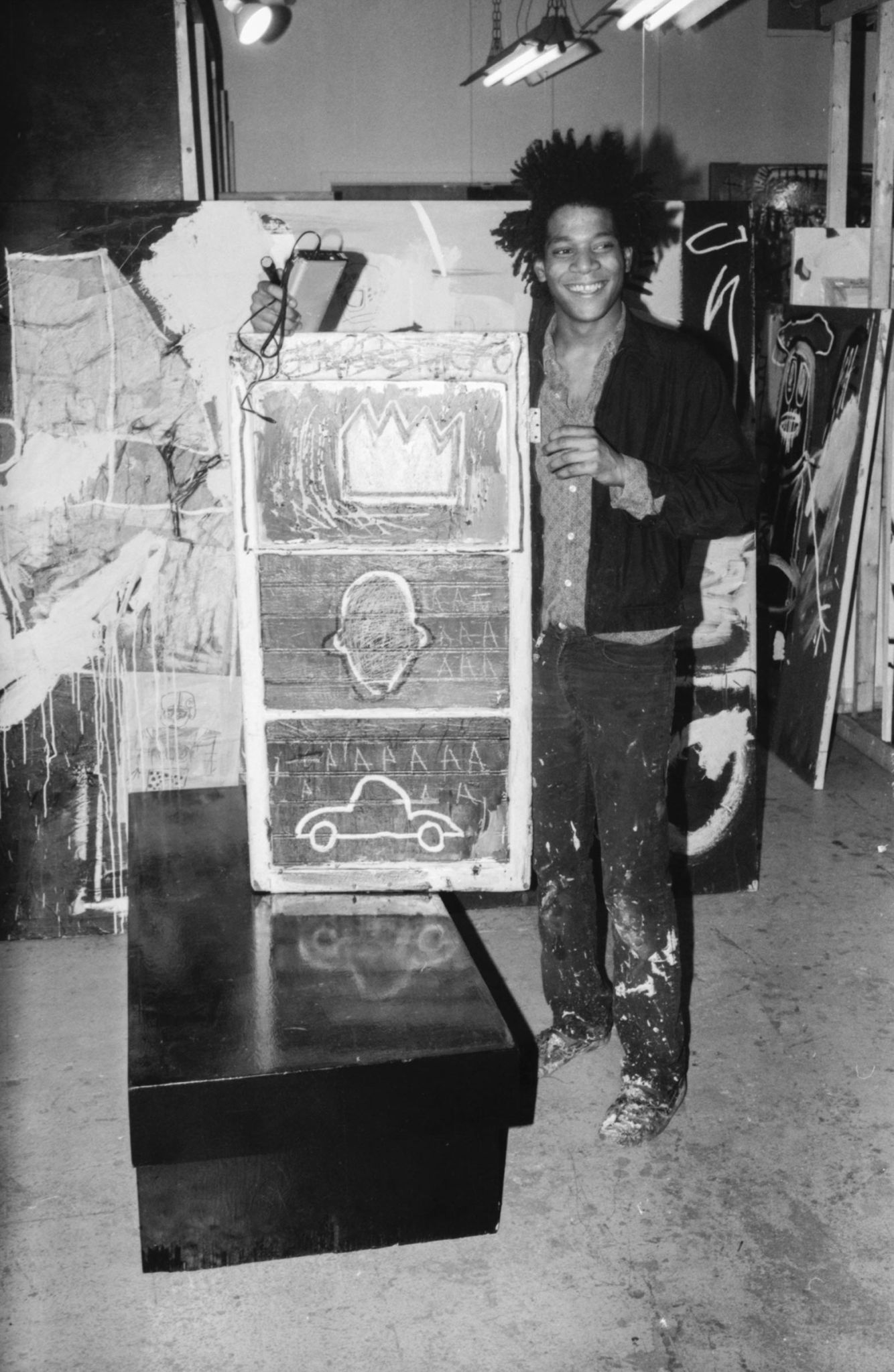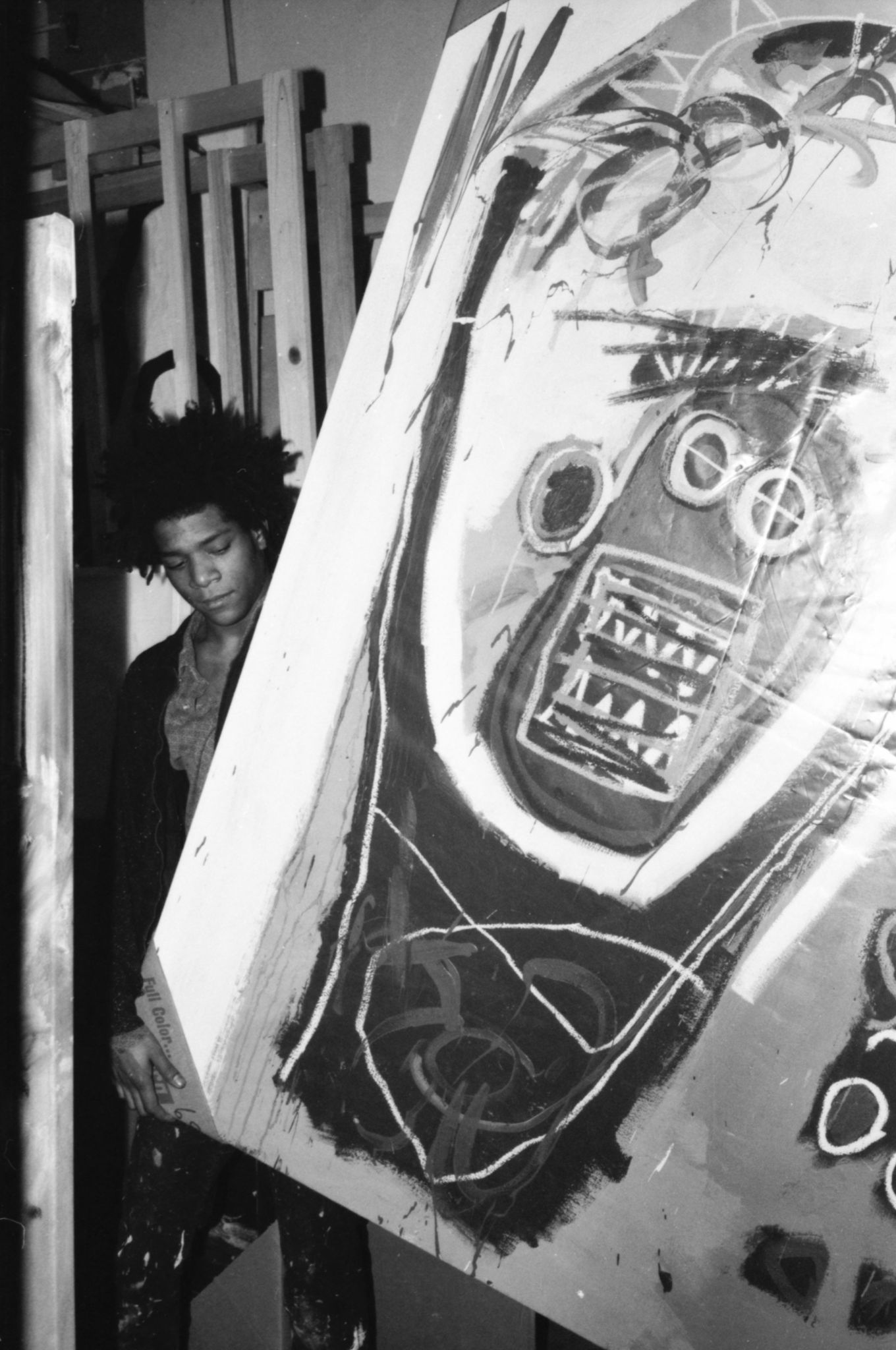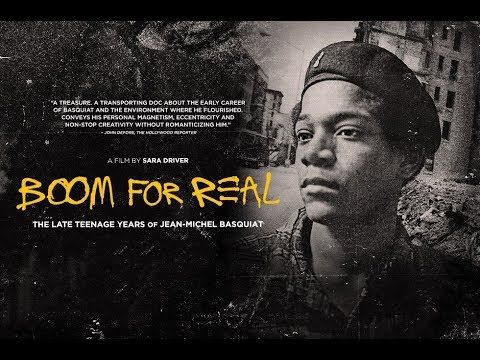Basquiat: The Artist and His New York Scenetells the story of the young Jean-Michel Basquiat (1960-1988). It shows his development in the early 1980s in New York, from graffiti artist to painter of world renown. The exhibition follows Basquiat in different stages of his young life and shows his environment as well as works by New York contemporaries.
More
Basquiat: The Artist and His New York Scenetells the story of the young Jean-Michel Basquiat (1960-1988). It shows his development in the early 1980s in New York, from graffiti artist to painter of world renown. The exhibition follows Basquiat in different stages of his young life and shows his environment as well as works by New York contemporaries.
The story begins around 1977. Basquiat and his friend, artist Al Diaz, have been making the rounds in New York’s East Village and SoHo as graffiti artists. Their wall texts, tagged with SAMO© start to attract attention. These are enigmatic and witty statements about society.
In 1979 and 1980, Basquiat shares a flat with his then girlfriend Alexis Adler in the East Village of New York. His urge to express himself spreads from the street to the interior of their flat. The walls and even the doors, radiator, TV and refrigerator are the targets of his artistic expression. This part of the exhibition comprises Basquiat Before Basquiat: East 12th Street, 1979–1980, a presentation that was organised and curated by the Museum of Contemporary Art Denver (MCA).
On the initiative of artists’ collective COLAB (Collaborative Projects Inc.), The Times Square Showtakes place in 1980 in a vacant massage parlour at Times Square, then a notorious neighbourhood in New York. It is Basquiat’s first public exhibition and one which marked not only his own breakthrough but also that of artists Keith Haring, Kenny Scharf, Nan Goldin, Kiki Smith, Tom Otterness and many others.
After The Times Square Show, Basquiat takes to painting on canvas. From that moment, various galleries in New York and Europe start noticing his work. The same can be said of Hans Sonnenberg, owner of the Gallery Delta in Rotterdam. In 1982, Basquiat’s paintings were featured in an early European solo exhibition at Gallery Delta. Basquiat: The Artist and His New York Sceneconcludes with a selection of Basquiat’s masterpieces.

Basquiat Before Basquiat: East 12th Street, 1979–1980
Basquiat Before Basquiat: East 12th Street, 1979–1980presents work made by
Jean-Michel Basquiat during the year he lived with his friend Alexis Adler in a small
apartment in the East Village. This archival material provides rare insight into the artistic life of Basquiat before he was recognized as a prominent painter in the early 1980s. While living
in this apartment, Basquiat’s creative impulses moved fluidly from his SAMO© tags on the surrounding streets and neighborhood into a more sustained practice in his and Adler’s shared home. Through painting, sculpture, works on paper, a notebook, and other ephemera, as well as Adler’s many photographs from this period, this exhibition explores how the context of life in New York informed and formed Basquiat’s artistic practice.
More
Basquiat Before Basquiatdeepens our understanding of this artist at a vital, yet mostly unknown moment of his career. The exhibition also attests to the artist’s virtuosity in formation and explores the many diversions he took as he developed his signature style.
Jean-Michel Basquiat was born in 1960 in Brooklyn. He lived and worked in New York until his death in 1988.
The exhibition is supported by presenting sponsors Henry and Lorie Gordon and
a generous gift from Daniel Benel and Lena Fishman.
SAMO©
Jean-Michel Basquiat started as a graffiti artist in 1977, at the age of 17, together with his friend Al Diaz. They got the idea for SAMO© when he and Diaz were pupils at City-As-School high school in Manhattan. Basquiat was a newcomer on the graffiti scene. Diaz, two years older than Basquiat, was already a graffiti legend at the time. They worked under the pseudonym SAMO©, pronounced ‘same oh’, an abbreviation of ‘Same Old Shit’.
A wave of SAMO© tags with poetic, sarcastic and philosophical statements appeared on the walls of the East Village and SoHo. The tags and text slogans soon became known in the streets and in the local newspaper media because of their mocking humour which poked fun at the art world, SoHo and yuppies.
More
Not knowing who the makers of SAMO© were, artist Henry Flynt (1940-) photographed a large number of the duo’s tags in 1979. The photos bring the cryptic one-liners to life in the colourful setting of broken windows and dirty paving bricks in New York.
The friends parted ways at the beginning of 1980, with Basquiat declaring the end of the duo with a wave of SAMO© IS DEAD tags.
The Times Square Show
In the summer of 1980, the 20-year-old Basquiat showed his work publicly for the first time at TheTimes Square Show, a group exhibition on the initiative of artists’ collaborative COLAB (Collaborative Projects Inc.).
More
This saw more than 100 young artists hard at work experimenting and opposing the art establishment in punk-like rebellion. Open 24 hours a day, the show took place in a vacant six-storey massage parlour at Times Square. There was an extensive evening programme with ‘Exotic Events’. There was also a souvenir shop where work by participating artists in series could be purchased.
What was new and extraordinary about the art at The Times Square Show, is that it blurred the line between ‘high’ art and popular culture. New forms of expression such as fashion, video and performance art were embraced and street art emerged from the underground scene into the mainstream. Engaged themes around politics, sexuality and multiculturalism were also explicitly represented.
More than 50 original works from The Times Square Show are on display here by Charlie Ahearn, John Ahearn, Jean-Michel Basquiat (who took part then as SAMO©), Andrea Callard, Eva DeCarlo, Jane Dickson, Stefan Eins, Coleen Fitzgibbon, Bobby G., Keith Haring, Jenny Holzer, Becky Howland, Peggy Lynn, Alan Moore, Tom Otterness, Cara Perlman, Christy Rupp, Jane Sherry, Kiki Smith and Robin Winters.
The Artist in His Studio
Basquiat’s contribution to The Times Square Show was in between writing graffiti and painting on canvas. From that moment onwards he focused on painting. In 1981, his paintings were shown for the first time at the New York/New Wave exhibition at PS1, now part of the Museum of Modern Art in New York. His work immediately caught the attention of prominent gallerists, launching his international career. From that moment on, things started to happen really fast, with various solo shows in 1982 in the United States and Europe.
More
In spring 1982, Marion Busch, founder of the Rotterdam Art Space gallery (1983-2001), travelled on her own initiative to New York. Her adventurous trip resulted in a meeting with Basquiat in his studio, where she interviewed him and shot black-and-white portraits of him as he held a tape recorder to his ear. Her interview and photos were published in the Dutch magazine Museumjournaalin January 1983.
Basquiat’s paintings also found their way to the Netherlands in 1982. In December of that year, Hans Sonnenberg (1928-2017), owner of the Gallery Delta in Rotterdam, presented one of Basquiat’s first solo shows in Europe.


Paintings
Between 1980 and his untimely death in 1988, Jean-Michel Basquiat created an extensive body of around a thousand paintings and two thousand drawings. Basquiat attained world fame with his raw paintings: colourful and painted with a great degree of freedom. Characterised by an energetic signature, his canvasses confront the viewer with issues of exploitation, racism and oppression.
More
Although Basquiat distanced himself after The Times Square Show from graffiti and street life, his poetic texts, words and letters – the copyright symbol included – continued to play a prominent role in his work. The texts, layering and collage technique also tie in completely with popular culture, advertising, art history and comic books.
Many of his paintings revolve around the concept of identity. He challenged the white dominated art scene. He also painted mask-like portraits and self-portraits. In his work, black self-reliant heroic figures, athletes, warriors, policemen, musicians and gods and goddesses are depicted as empowered, wearing a crown.
Boom for Real: The Late Teenage Years of Jean-Michel Basquiat (2018) – Length: 78 minutes
Boom for Real: The Late Teenage Years of Jean-Michel Basquiat(2018) goes into Basquiat’s early years in New York. The documentary paints a lively picture of the rough and bustling Lower East Side in Manhattan in the 1970s, which defined the young and enigmatic artist. Using unique archival material and interviews with various contemporaries who knew him, director Sara Driver portrays his adventurous early years and his artistic scene.
This 78-minute documentary is shown continuously in both the exhibition space and on the 2nd floor of the SCHUNCK Glass Palace. These screenings give you the opportunity to to watch the documentary at any time of your chosing; before your visit, or after your visit.
More
Driver, a friend of Alexis Adler’s, was an active part of the scene. Adler’s collection gave occasion to immortalise an extraordinary period in New York. That brought Driver back behind the camera, after many years, to make this documentary.
In the period from 1978 to 1981, Driver was a film student at New York University, where she met her life and professional partner Jim Jarmusch, the well-known film director. They knew Basquiat and met him regularly at the legendary Mudd Club, where he and celebrities such as Andy Warhol, David Bowie, Madonna, David Byrne, Debbie Harry, Allan Ginsberg and Grace Jones were often to be found.
With: Luc Sante, Lee Quiñones, James Nares, Jim Jarmusch, Patricia Field, Fab 5 Freddy, Sur Rodney, Alexis Adler, Al Diaz, Diego Cortez, Michael Holman, Jennifer Jazz, Glenn O’Brien, Coleen Fitzgibbon, Carlo McCormick, Bud Kliment, Felice Rosser, Mary-Ann Monforton


